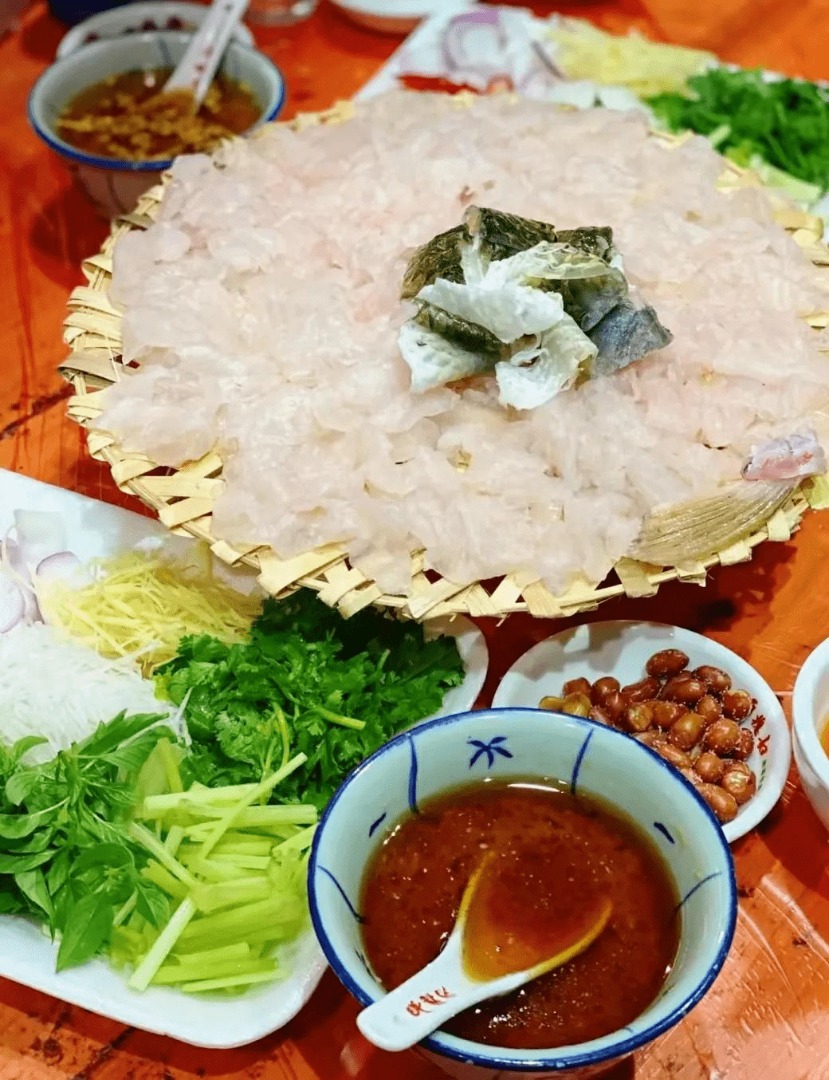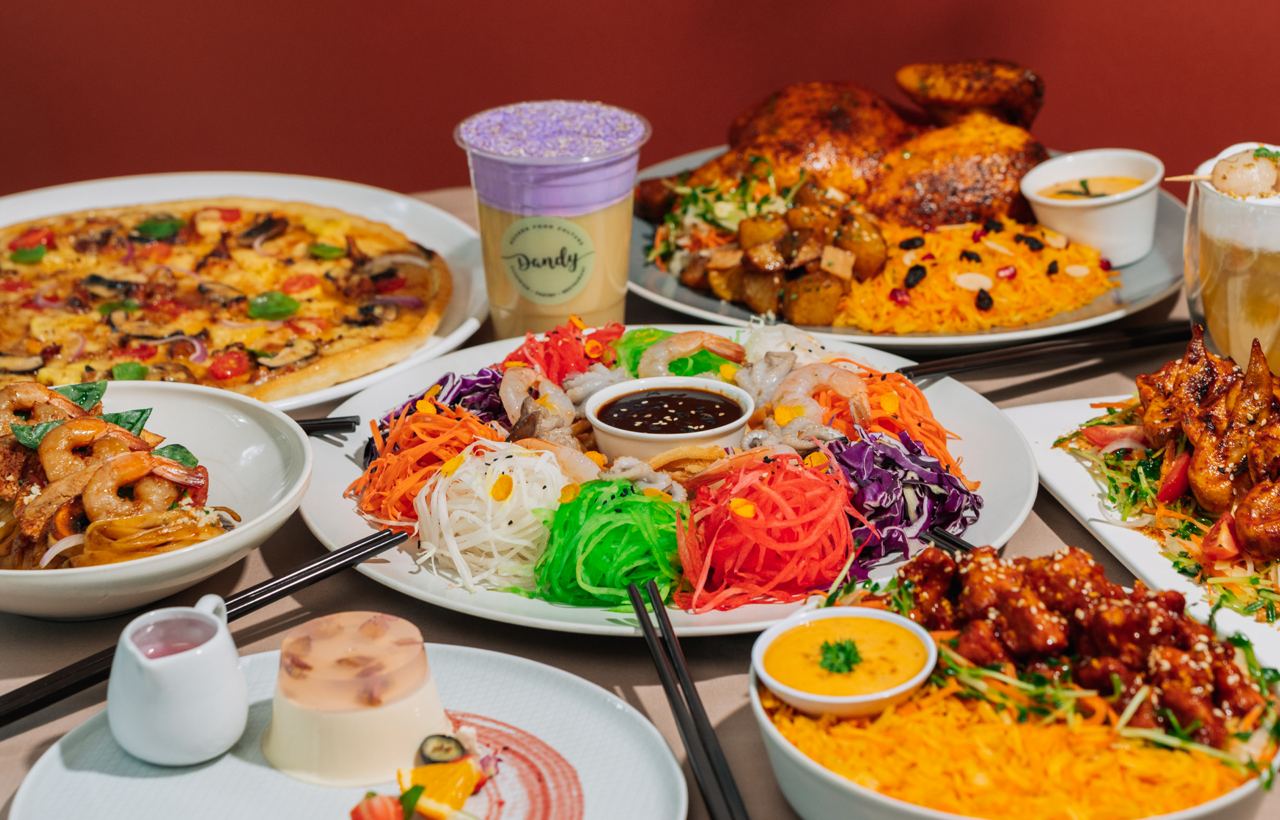A Yee Sang Story and Its Significance
Heng ah!! Huat ah!! Ong ah!! – loosely translated from Hokkien means “Good Fortune and Prosperity!!” are the kind of typical cheer you’ll hear when adults are playing with their food. It also signals that Chinese New Year is around the corner.
What they are doing is an activity called Prosperity Toss or Lo Hei (捞起).
So what is this Yee Sang? Why is it so popular? Why toss food in the air?
Well… according to sources (with research and old timers backing it up), Yee Sang originated from Guangdong, China.
But, it doesn’t look like the one Malaysians are used to seeing. The China Chinese definitely did not toss their fish up in the air before enjoying them.
This is how the original Yee Sang looks. The star of the dish is actually raw fish, like sashimis. The vegetables and peanuts are more like side dishes.

The Yee Sang that Malaysians and the Southeast Asian Chinese know today was believed to be invested by Loke Ching Fatt, Cantonese immigrant in Malaya in the 1940s.
He was the owner of a Seremban based catering company called Loke Cheng Kee. Business was thriving back in the day when Loke would cater to banquets. After the war (Japanese Occupation), business was extremely slow and the man had to get creative with a gimmick to make some extra cash.
He remembered that back in China, people used to eat Yusheng/Yee Sang to celebrate “ren ri”, the 7th day of Chinese New Year. It’s also known to be “everyone’s birthday” in Chinese culture.
So, long story short, he invented his version of Yee Sang which has a close resemblance to the Yee Sang we know today.
Only a close resemblance? Yep! Because Loke’s Yee Sang contained about 30 ingredients with an incredibly complex combination of colours, aromas, flavours and textures. He named his legendary dish Sup Kum Yee Sang (十感鱼生, or the “Tenth Sense Yee Sang”).
It gained popularity amongst the Seremban folks and soon word spread to other states in the peninsular. The rest is history. As time went by, others were inspired by the dish and soon added their own unique twist to the legendary dish.

Enough of history lessons. Now we know who’s the brilliant master chef that created the dish.
Fun Fact!
Loke Ching Kee is actually the grandfather of our current Transport Minister – Anthony Loke! He helped serving food, taking orders and washing dishes at his grandfather’s restaurant when he was only ten at that time!
What made Yee Sang so popular during Chinese New Year for Prosperity Toss?
Because adults love an excuse to play with our food! Haha! No, we’re joking, although there may be some truth to the joke.
According to Loke’s eldest daughter, Loke Foong Ying, Lo Hei just happened naturally! The original Yee Sang wasn’t supposed to be eaten freestyle. The waiters would carefully mix the ingredients in a step by step process to maintain the texture and taste.
Obviously, hungry diners couldn’t wait for their table to be served and started to mix the Yee Sang on their own. Everyone just kind of helped in the mixing process and it became a norm.
Then… On one occasion, a group of high-spirited youngsters got the idea to call out auspicious wishes while tossing the dish. The idea caught on… and a new tradition was born.
But that wasn’t enough!
The Chinese community loves homophones. What? Homophones are words that sound the same but have different meanings. But obviously you have to pronounce them in Mandarin, Cantonese or other Chinese dialects.
So, Yee Sang (魚生) which translates to “raw fish” sounds the same as 余升 or “increased abundance/prosperity”.
So over time, the ingredients used in modern Yee Sang are typically symbolic – like fish (魚) sounds like abundance (余). Pomelo or lime (大利) refers to the auspicious wish of having prosperity and good luck (大吉大利). And many more… ask your Chinese friends, they’ll tell you more.
Listed in Malaysia’s National Heritage List
Whoaa…. Yeah, Yee Sang was added into Malaysia’s National Heritage List in 2019!
It joined the ranks of Nasi Lemak, Teh Tarik, Satay and many other delicacies.
Today, this tradition is enjoyed by all races in Malaysia. It brings communities together regardless of background and ethnicity.
“Playing with food” definitely has its perks, right? We’re joking. Please don’t play with your food and most importantly, don’t waste food.
If you’d like to give this heritage food a try, Dandy is offering a halal version of it.
Invite your Chinese friends along for a prosperity toss, and then tell them this Yee Sang story and see their jaw drop.

Credit: Post adapted from cilisos.my




